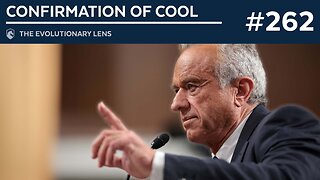Premium Only Content

What The Heck Is Going On in Fallout 76 Man Aliens PvPin
The search for extraterrestrial intelligence (SETI) is a collective term for scientific searches for intelligent extraterrestrial life, for example, monitoring electromagnetic radiation for signs of transmissions from civilizations on other planets.
Scientific investigation began shortly after the advent of radio in the early 1900s, and focused international efforts have been going on since the 1980s. In 2015, Stephen Hawking and Russian billionaire Yuri Milner announced a well-funded effort called Breakthrough Listen.
There have been many earlier searches for extraterrestrial intelligence within the Solar System. In 1896, Nikola Tesla suggested that an extreme version of his wireless electrical transmission system could be used to contact beings on Mars. In 1899, while conducting experiments at his Colorado Springs experimental station, he thought he had detected a signal from that planet since an odd repetitive static signal seemed to cut off when Mars set in the night sky. Analysis of Tesla's research has ranged from suggestions that Tesla detected nothing and that he simply misunderstood the new technology he was working with, to claims that Tesla may have been observing signals from Marconi's European radio experiments and even that he could have picked up naturally occurring Jovian plasma torus signals. In the early 1900s, Guglielmo Marconi, Lord Kelvin and David Peck Todd also stated their belief that radio could be used to contact Martians, with Marconi stating that his stations had also picked up potential Martian signals.
On August 21–23, 1924, Mars entered an opposition closer to Earth than at any time in the century before or the next 80 years. In the United States, a "National Radio Silence Day" was promoted during a 36-hour period from August 21–23, with all radios quiet for five minutes on the hour, every hour. At the United States Naval Observatory, a radio receiver was lifted 3 kilometres (1.9 miles) above the ground in a dirigible tuned to a wavelength between 8 and 9 km, using a "radio-camera" developed by Amherst College and Charles Francis Jenkins. The program was led by David Peck Todd with the military assistance of Admiral Edward W. Eberle (Chief of Naval Operations), with William F. Friedman (chief cryptographer of the United States Army), assigned to translate any potential Martian messages.
-
 11:07:18
11:07:18
Lorespade
1 year agoLorespade's Adventure In No Man's Sky
39 -
 1:01:13
1:01:13
LFA TV
8 hours agoPRESIDENT TRUMP SIGNS LAKEN RILEY ACT | BASED AMERICA 1.29.25 6pm
6.99K4 -
 LIVE
LIVE
2 MIKES LIVE
2 hours ago2 MIKES LIVE #172 News Breakdown Wednesday!
244 watching -
 LIVE
LIVE
The Big Mig™
3 hours agoJ6’r Ryan Samsel Free At Last The BOP & DOJ Exposed
1,765 watching -
 DVR
DVR
The Based Mother
3 hours agoEXECUTIVE ORDER MUTILATES GENDER IDEOLOGY! Trump’s pulling out all the stops.
48 -
 1:05:44
1:05:44
The Amber May Show
20 hours ago $0.10 earnedSaving The Innocence | Rescuing Children From Rape Trafficking | Alan Smyth
5.32K3 -
 1:40:46
1:40:46
In The Litter Box w/ Jewels & Catturd
1 day agoIs the Jab Poisonous? | In the Litter Box w/ Jewels & Catturd – Ep. 730 – 1/29/2025
64.2K52 -
 2:06:16
2:06:16
Darkhorse Podcast
7 hours agoConfirmation of Cool: The 262nd Evolutionary Lens with Bret Weinstein and Heather Heying
81.1K42 -
 15:20
15:20
Silver Dragons
4 hours agoCENTRAL BANKS to Start Buying SILVER? Dealer Reveals What Silver Price Will Do
24.4K3 -
 1:29:21
1:29:21
The Quartering
6 hours agoRFJ Confirmation MELTDOWN, BLM Supermayor Brawl, 50 Million On Condoms For Gaza & More Insanity!
85.2K90